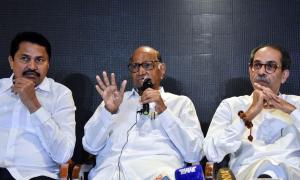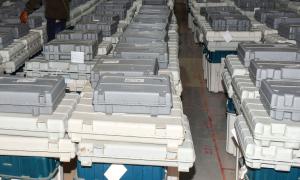The turmoil in the Nandigram area of southern West Bengal over the acquisition of agricultural land for industrialisation is likely to have a major impact on the future of not just the state but the entire country.
Several people have been killed in the violence so far and the area, covering three panchayats in East Medinipur district, seems to be in the grip of a popular revolt. For a period it was a no go area for the state police, with roads dug up and culverts broken to prevent outsiders from coming in.
This development, coming close on the heels of the state government's victory over the Trinamool Congress on land acquisition in Singur for the Tata car project in another district of West Bengal closer to Kolkata, is likely to set the clock back for the entire country, making it hugely more difficult to acquire agricultural land for industrial and urban projects.
This, in turn, is likely to have a significant impact on the economic future of the country as at stake is the state's ability to acquire peacefully large tracts of agricultural land, without which rapid industrialisation and orderly urbanisation will be impossible. This is aside of the huge investments which are dependent on the special economic zones taking off.
Since land acquisition is so critical, it is necessary to find out why the West Bengal government won in Singur and appears to be up against a wall in Nandigram. Singur, which mainly grows paddy, is much closer and well connected with Kolkata, with virtually every family having a commuting wage earner.
The agricultural ethos has already partially given way to working for a salary. Nandigram, on the other had, is totally rural with a negligible salaried class and the farmers' identity deeply connected to land. For them the common fear is that if they lose their land they will end up begging on the streets of Kolkata.
Plus, Nandigram extensively cultivates paan (betel leaf) as a commercial crop. Its paan is said to be the best in West Bengal. Parts of Nandigram are low-lying, making paan cultivation, whose creepers grow on stilts, a virtue out of a necessity.
What is even more significant is the peculiar politics of Midnapur. Violence is its currency of settlement for running political feuds, which get intertwined questions of honour, the same as in Bihar. Plus, there is a spillover of Naxalite influence from adjoining areas of Purulia and Bankura districts. As if this was not enough, there is a substantial Muslim population, which very quickly takes on a siege mentality.
Recently there was a local flare-up over the pulse polio vaccination campaign. In the nearby area of Keshpur, some years ago the Trinamool Congress workers drove away left activists. The left has now regained entry and the Trinamool workers have made common cause with the Naxalites. There has been also a strong mobilisation of arms in the area, courtesy the Naxalites.
This is the tinderbox in which arrived a communication from the Haldia Development Authority, indicating that three panchayats which overlay Nandigram were part of the extensive tracts earmarked for a chemicals SEZ around the nearby port of Haldia, a ship repair yard and an expressway to connect Kolkata airport and Haldia port.
Once this became known, the local mobilisation began and then came an innocuous government meeting over a sanitation project. The local people saw the visiting officials as the advance guards for land acquisition, set fire to the BDO office and dug up the roads.
Several issues arise.
First, could the West Bengal government have handled it better, that is, was it a failure of tactics? Second, should agricultural land which yields good commercial crops be acquired to set up industry and towns? Third, what is this going to do to economic development in the entire country?
As industrialisation and urbanisation are inevitable and too much of land is currently under the plough in India with abysmally low productivity, it is in everybody's long-term interest to convert a good deal of agricultural land to other uses. Can this be done without turmoil and virtual revolt? Done it has, and with a bit of government acquisition wherever large contiguous tracts are needed.
With hindsight, the view is gaining ground that in Nandigram (Singur was another matter as there opposition politics was clearly at play and a majority of farmers had already decided to sell) the state government should have been more conciliatory.
The state's left politicians are seen to be arrogant (they think they can overcome with force 'pockets of opposition') and the administration non-transparent and unable to do its homework well. China has had to change its land acquisition practices after huge protests in 2005. Projects must stand or fall depending on whether a vast majority of the land in question can be acquired through voluntary sale.
Whatever be the rights and wrongs, with the Naxalites and Medha Patkar having joined in the fray from Singur, land acquisition is likely to become increasingly troubled. The way not to court trouble is to, in the first place, leave aside well-knit communities surviving on successful agriculture.
Lastly, the case for industrial and urban development has to be sold better. The land today being taken away is tangible, the jobs that will come tomorrow are not. The popular mood in West Bengal right now is that the left political machine is trying to snatch away something (chhinie nichche).
Besides, for many the symbol of new economic policies till now is the shopping mall. They don't care much for that kind of progress.









More from rediff